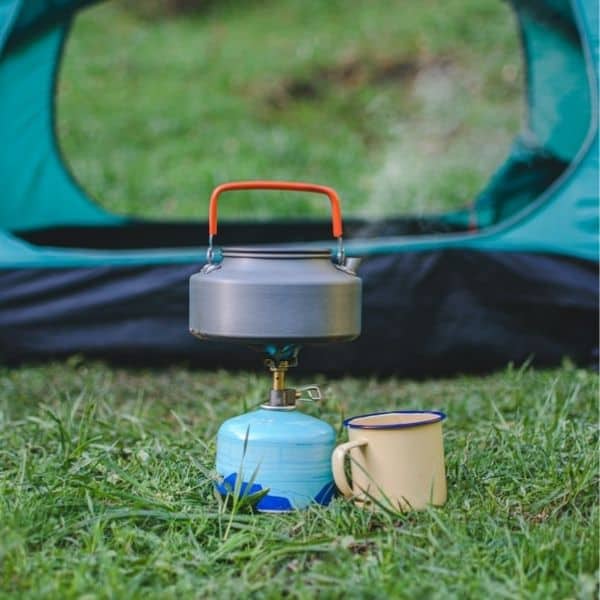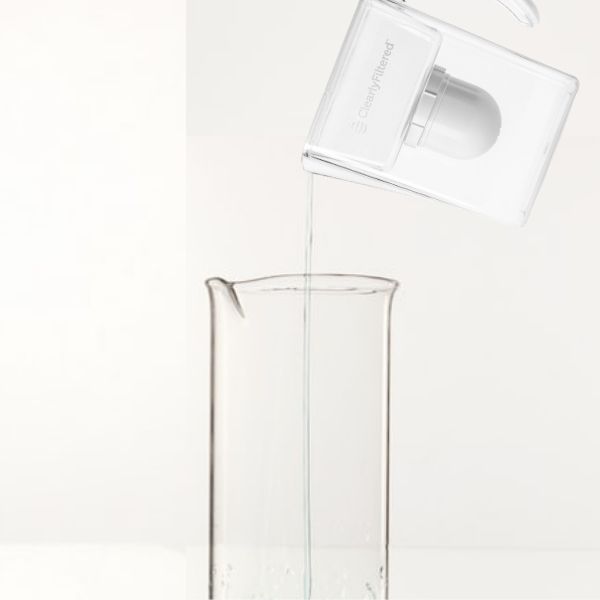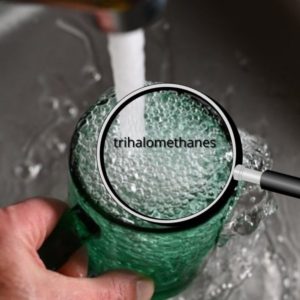4 Effective Ways of Removing Trihalomethanes From the Drinking Water
At this moment, we are mentioning some practical ways to remove THMs from your drinking water. So you could satisfy your thirst with quality water and enjoy healthy living.
Activated Carbon Filtration
If you are interested in removing 99% of THMs from water, the easiest and most effective way is to use a water pitcher containing a carbon filter. You need to install a certified carbon filter for THM’s removal on your tap and follow its replacement instructions. Aquasana and Amway water filters both proved to be effective.
Carbon filters work on the principle of adsorption, in which chemical particles in the liquid to be dealt with are trapped inside the pores of a carbon substrate. Activated carbon is typically used in filters instead of standard carbon, as it has a higher surface region than non-treated carbon.
Boiling Water
Another very effective and cost-efficient method for removing THM’s is boiling. Boiling is the easiest and the most accessible approach to get rid of most THM’s. According to a study, 5 minutes of boiling is sufficient to remove 97% of THM’s from water.
The amount of Chloroform and dichlorobromomethane, the two most common THM”S, is reduced to a significant level upon boiling, showing their volatility. When you boil the contaminated water, THM’s will evaporate along with water vapors leaving quality water in your pan.

Water Softening
Water softening is the method involved in eliminating dissolved synthetic compounds that cause hardness in water. Soft water is essential, and it is accomplished either by ion exchange or by adding chemicals that form precipitates. These precipitates will be insoluble in water and can be filtered out easily.
The water softener system is extraordinarily useful in eliminating THMs in drinking water. You can utilize water softening and fruitful with ion exchange resins.
Reverse Osmosis
Reverse Osmosis is a method utilized to eliminate a more significant part of impurities from water by pushing the water under tension through a RO film that is supposed to be semipermeable. A reverse osmosis system will likewise work excellently in eliminating THMs in drinking water.
RO membranes are cellulose and polyamide derivatives, and they can remove 99% of dissolved material from drinking water. The molecular weight cut-off for the RO membrane is in the range of 50 to100 Dalton. The pore size and type of RO membrane are two significant variables in the blockade of contaminants.
What Are Trihalomethanes?
When Halogens replace three out of four hydrogen atoms of methane, trihalomethanes THMs are formed. These are considered environmental pollutants, and many are also carcinogens.
The reaction between chlorine used in chlorine disinfection and naturally occurring organic matter in the water forms trihalomethanes (THMs), one of the disinfection byproducts. As there are four combinations of bromine and chlorine possible, four trihalomethanes are found in drinking water.
Based on guidelines, the safe level of trihalomethanes in drinking water is in the concentration of 0.1mg/L.
The high concentrations of THMs in drinking water have health risks, including adverse effects on the reproductive system and cancer.
Are you wondering about how the amount of THMs increases in water systems? It is due to different factors, including chlorine, temperature, pH, humic acid concentration, bromide ion concentration, etc.
However, chlorine dioxide is effective in reducing chlorine disinfection and eliminating THMs.
Source of Trihalomethanes Contamination
Levels of chloroform, the most well-known THM, are by and considerably higher in chlorinated water systems starting from surface water than in groundwater, due to higher natural matter in the past. The degree of development of chloroform shifts with various water treatment processes.
Centralizations of chloroform in chlorinated water in treatment plants and appropriation frameworks are around twice as high during hotter months as during colder months.
It is an outcome of the greater centralizations of forerunner natural materials and particularly of the more excellent paces of arrangement of sanitization results in the crude water during the hotter period.
Furthermore, levels can increase as the chlorinated water moves from the water treatment plant through the appropriation framework due to the presence of chlorine remaining.
Further expansions in centralizations of chloroform in water can happen in homegrown hot water tanks. Nonetheless, capacity in the hot water tank builds the degree of chloroform twice as much in colder months.
When more heated water is needed to keep up with the shower temperature, as in hotter months, groupings of chloroform in the warm water utilized for showering are generally consistent for the two-time frames.
The Symptoms & Danger of Consuming Trihalomethanes
Trihalomethanes are a class of organic matter found in drinking water. They’re created when chlorine reacts with natural sources like Volatile Organic Compounds (VOCs), which respond to form these chemicals as they evaporate over time.
People affected with organic contaminants like THM may experience asthma, abnormal heart function, and vomiting due to their irritability while exposed. Even at deficient levels, consumption has been linked to cancer-causing properties, so always make sure you’re safe!
The outcome of trihalomethanes consumption can be hazardous if the person has an impaired kidney or is on dialysis. The symptoms include; stomach pain, vomiting, and nausea, which may lead to dehydration because these organs work harder than average during the cleansing process.
As kidneys are essential in removing toxins from the body when you drink water, THMs will impact them adversely. So, don’t expect any benefit from drinking water since this will all end up going through your intestines.
The danger comes into play once substances like chlorine attack our liver. They cause internal bleeding leading us back towards feeling sick due to more harm done internally than externally. Furthermore, it can impact the central nervous system as well.
A study published in the BMJ Journal found that extended consumption of chlorinated water is linked to your chances for bladder cancer, specifically in men.
Does Water Filter Remove Trihalomethanes?
Water containing more than 0.1 mg/L of trihalomethanes is highly harmful to your health. If your water source has more significant than this amount of trihalomethanes, you need to be cautious about its removal.
Fortunately, an activated carbon filter is quite efficient in getting rid of dissolved trihalomethanes like chloroform, BDCM, DBCM, and bromoform. So installing a water filtration system that is efficient in removing trihalomethanes from water is necessary and beneficial for your health.
For that purpose, Activated carbon filters are the best and can remove 99% of THM’s.
Which Water Filters Are Used for Trihalomethane Removal?
Water filters available in the market are efficient and effective in removing trihalomethanes from drinking water, improving the water quality. There are some best water distillers, but when it comes to THM removal, we have laid out the best trihalomethanes water filters for you that can perform an excellent job. You can choose from the below-mentioned filter systems.
Shower Water Filter
Trihalomethanes are volatile and can be inhaled while bathing. Although inhaling a small amount is not dangerous compared to consuming drinking water, inhaling a small amount for an extended period can be harmful.
Therefore, you need to install shower filters in your house to remove trihalomethanes from water.
Whole House Filtration
Treating your whole house water supply isn’t a big deal now as whole house water filtration can help you in this regard.
You can avoid inhalation of THM’s while bathing or watering plants and consuming drinking water in one go by simply installing a whole house water filter at your main water supply.
It has an activated carbon filter as one of its multi step water filtration systems. Hence it can effectively reduce THM levels.

Water Filter Pitcher
If you want the cost-friendly filter to drink quality water for your small family, you can opt for this filter.
This filter is among the best water filter pitchers because it is portable, easy to handle, and can be refrigerated with good filtration capacity. So this water pitcher is the most pocket-friendly option.
Under Sink Water Filters
The name indicates its benefit as you can install it under your sinks hence helping in preserving the beauty of your kitchen and effective filtration.
It is a multistep filtration system comprising reverse osmosis systems and an activated carbon filter as one of its filtration steps.
FAQs on How to Remove Trihalomethanes From Water?
How do I know if my house is contaminated with trihalomethanes?
Trihalomethanes are not easily detected in water as they are colorless and odorless. Therefore, it is impossible to detect trihalomethanes in water without proper testing.
So, you are advised to check your filters monthly or biannually. And this testing is done by taking samples and getting them tested through gas chromatography.
Does Brita remove trihalomethanes?
Brita water filters do not remove THMs from water. As Brita works on the mechanism of activated carbon filters and ion exchange resins, both are not efficient in removing trihalomethanes.
Does distillation remove trihalomethanes?
The liquids are evaporated, converted into vapors, and then condensed in distillation. As Trihalomethanes are volatile, they also evaporate along with the water, and therefore, they can not be removed by distillation and boiling water.
Conclusion
According to the Environmental Protection Agency (EPA), the total safe concentration of the four chief constituents of trihalomethanes is 80 parts per billion in treated water.
The volatile nature of trihalomethanes makes it challenging to remove them from drinking water. Therefore, all filters are not capable of doing so. However, our list of filters is efficient to cope with THMs. We hope this discussion was helpful for you.
